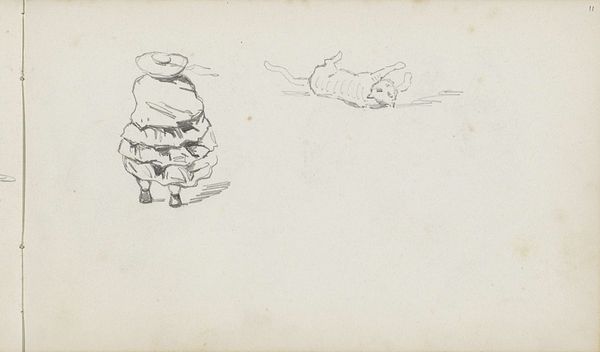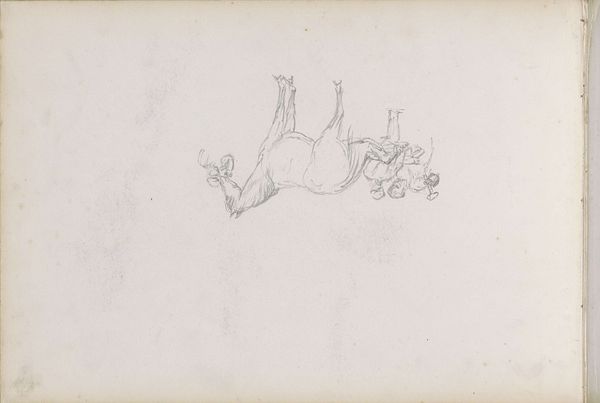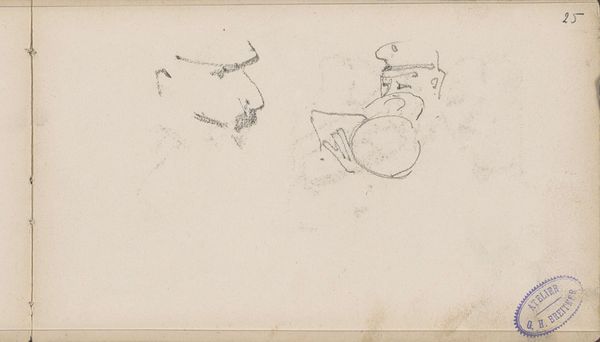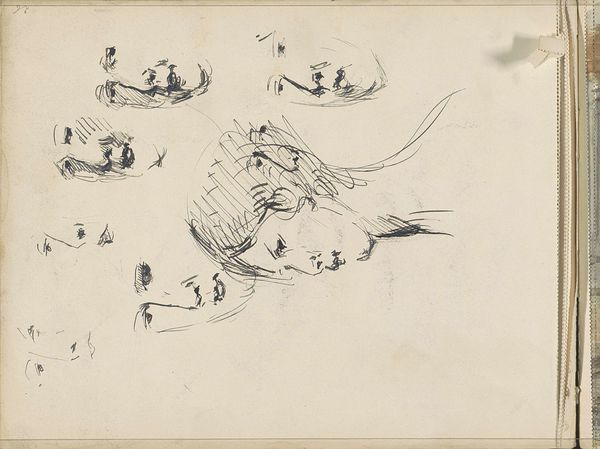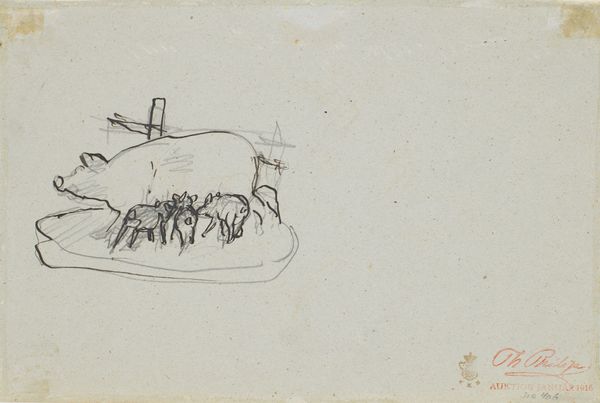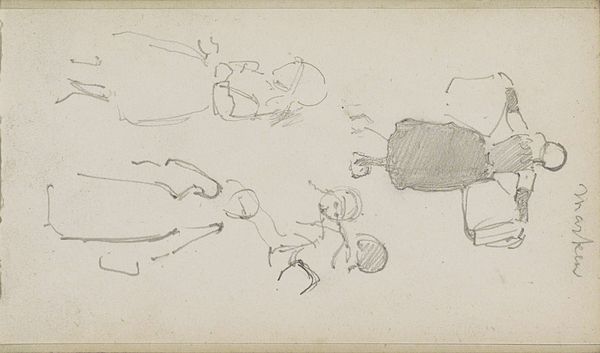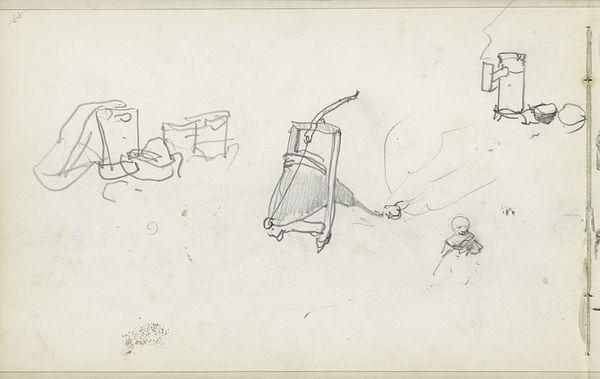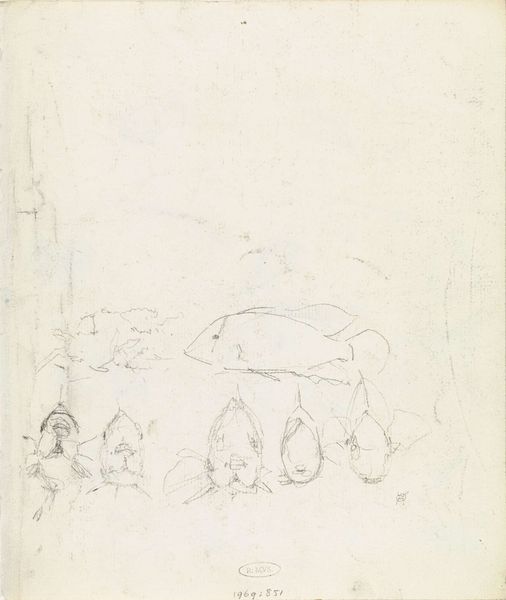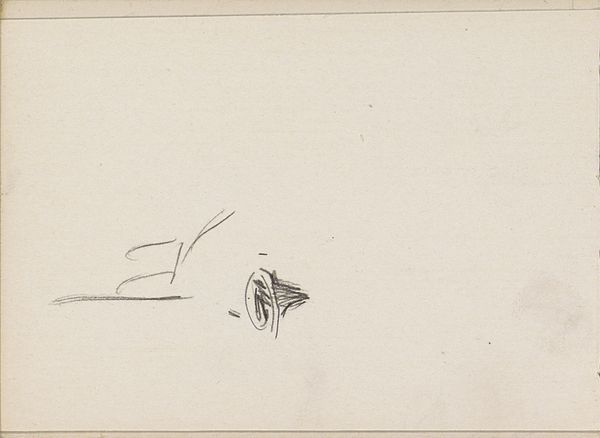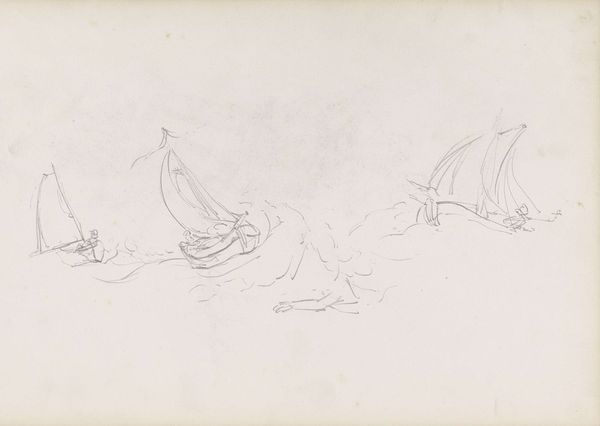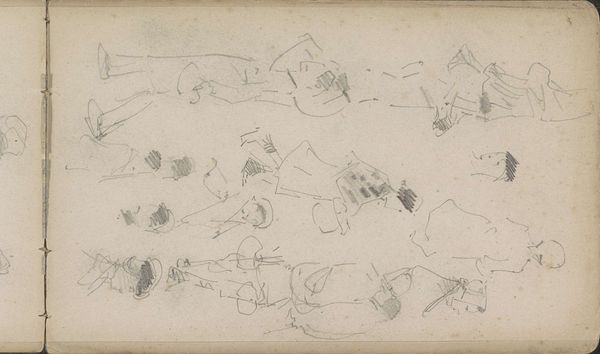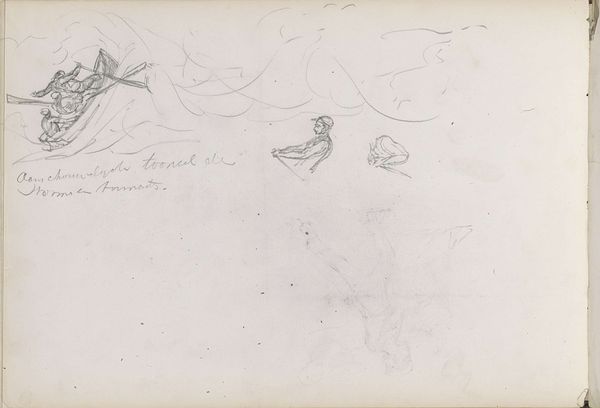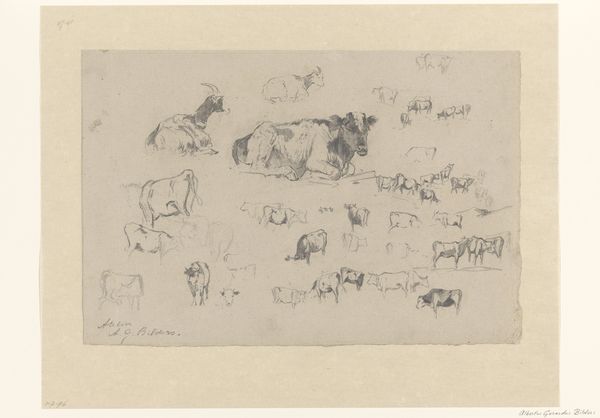
drawing, pencil
#
drawing
#
impressionism
#
pencil
#
cityscape
#
realism
Copyright: Rijks Museum: Open Domain
Editor: This is "Gebouwen, van bovenaf gezien," or "Buildings, Seen from Above," by George Hendrik Breitner, made with pencil around 1872 to 1879. The first thing I notice is how sparse the composition is; it feels like peering at urban planning in its infancy. What's your take on this cityscape, or rather, its representation? Curator: I see it as more than just urban planning. Consider the late 19th century, a period of intense social and political change. The rapid urbanization visible in the drawing would have had a profound effect on how people lived and worked, creating new power structures and inequalities. What do these stark, almost skeletal buildings signify in the context of burgeoning industrial capitalism? Editor: That's interesting, I hadn’t considered that! They look unfinished, almost fragile. Perhaps Breitner wanted to convey instability? Curator: Precisely. Breitner's artistic choice to leave so much empty space, to present these buildings as isolated elements, can be interpreted as a critique of that era’s relentless, often dehumanizing progress. We should remember that industrialization disproportionately affected marginalized communities. How does this drawing engage with questions of power and access in the developing city? Editor: So the empty space around them emphasizes their disconnection and potential isolation? Like how the pursuit of economic growth can isolate communities? Curator: Exactly. Breitner isn't simply documenting a cityscape. He's prompting us to confront the social and political consequences inherent in its development. Consider also that Breitner, later in his career, used photography as source material; how might that impact how we view his observational approach? Editor: It provides more depth and invites us to consider not only architectural and societal frameworks but their representation via evolving technologies and the power dynamics involved with looking at and depicting such a complex system. Curator: Precisely! Art offers a lens through which to examine historical inequities, offering new angles from which to approach progress and strive for inclusive urban realities. Editor: I hadn't appreciated how a simple sketch could open up a dialogue about urbanization, inequality, and representation. Curator: That’s the power of art, to invite questions and challenge our perspectives on the world around us.
Comments
No comments
Be the first to comment and join the conversation on the ultimate creative platform.
